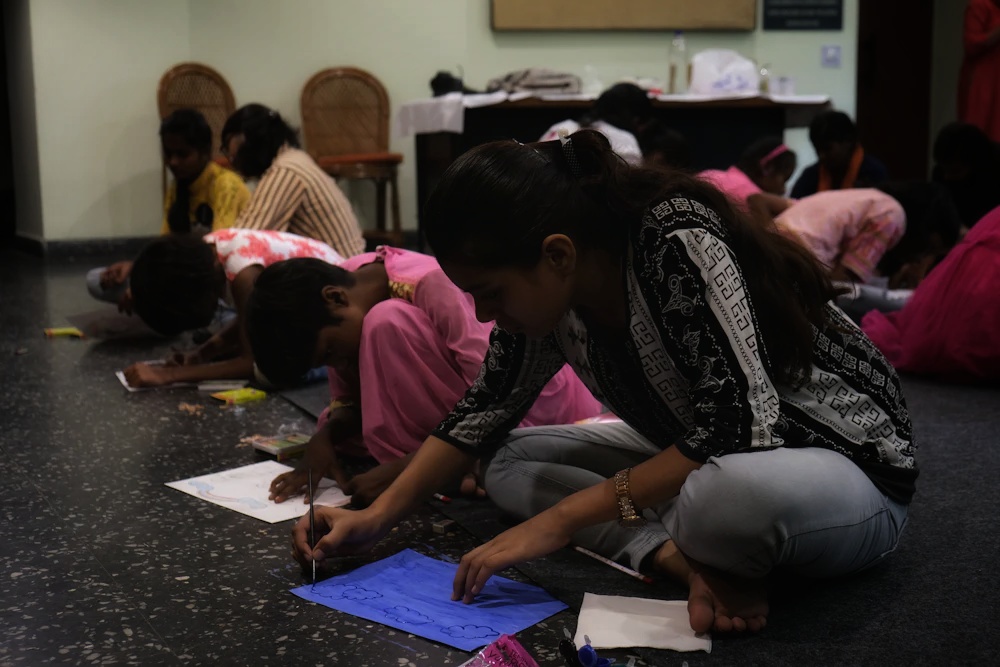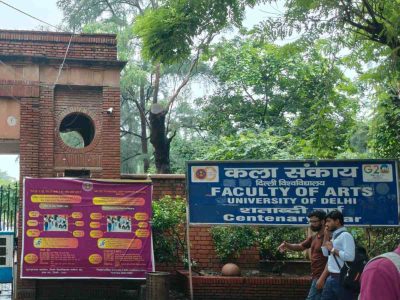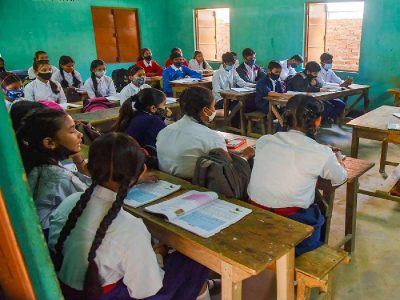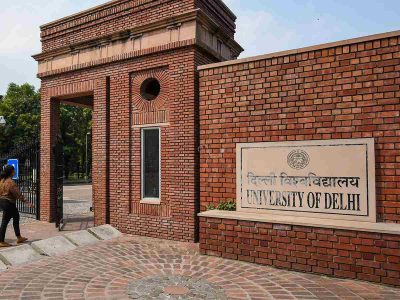Nestled in Vasant Kunj, Aarambh Waldorf school prioritises play over rote learning, breaking away from traditional norms. Besides, there are no Parent-Teacher Assessments (PTAs), signalling a departure from the mainstream educational system.
Sonam Babosa Dugar, admin and parent volunteer in the school, says, “Here, students use real objects like fruits to understand parts and wholes visually. They connect fractions to everyday experiences, like measuring ingredients in cooking. Instead of formal symbols, they start with shared snacks, teaching students division of a whole into equal parts. Artistic projects, such as creating murals, showcase fractions creatively.
“Problem-solving includes designing recipes with fractions. Assessment focusses on real-world applications, like sharing snacks. Collaboration is key, with activities fostering teamwork. Outdoor exploration, like dividing gardens, adds nature to the learning experience. In Waldorf, fractions become a blend of hands-on learning, creativity, and a connection with the world.”
What’s in the report card?
At Aarambh Waldorf, the concept of grades departs from the conventional educational structure. Rather than adhering strictly to standardised grading systems, this alternative learning centre emphasises a more holistic and developmental approach.
“Students at Aarambh Waldorf progress through phases of learning that align with their individual growth and development, emphasising on a personalised journey rather than adhering to rigid grade levels. This approach is rooted in the Waldorf philosophy, which recognises the diverse pace at which children learn and seek to nurture their unique talents and abilities. The absence of traditional grades allows for a more fluid and flexible educational experience, where the focus is on fostering love for learning, creativity, and a deeper understanding of subjects, rather than simply achieving predetermined academic milestones,” says Yogita, another parent volunteer and admin of the school.
Aditi Khare, 31, who is a resident of Vasant Vihar is keen on admitting her three-year-old daughter in alternate schools.
She shares, “I discovered Aarambh Waldorf school while searching for alternative education options for my introverted three-year-old daughter. The school’s unique approach, emphasising emotional well-being over traditional report cards, resonates with what I believe is crucial for a strong foundation. The proximity to my husband’s office is a plus, and after speaking with the staff, attending the upcoming orientation feels like the right step. I’m excited about the prospect of an educational environment that aligns with my daughter’s needs and focuses on understanding her emotions and reactions in various situations.”

The class sizes vary, with KG groups comprising 15-20 children and grades hosting 4-8 students. The kindergarten curriculum prioritises unstructured play, arts, movements, gardening, and cooking, fostering a strong foundation.
Focussing on sensory-motor development in the early years, Aarambh Waldorf tries to reduce the likelihood of learning difficulties in later grades. The school abstains from structured sports until the age of 9-10, instead focussing on unstructured play and teacher-led social games.
Experiential learning
In the Senior Programme (Grades 8-12) at Heritage Xperiential Learning School (HXLS), the focus is on profound learning, authentic assessments through live projects, and cultivating 21st-century skills like communication and collaboration.
The curriculum addresses the challenges of adolescence, fostering an energetic and creative atmosphere. The pedagogy emphasises dialogic and participative methods, empowering students to be self-directed learners. The transformative process experienced by young adults includes physical, emotional, and psychological aspects, with a focus on understanding oneself. Open discussions on ‘taboo’ subjects are encouraged, and practices like Silence Time aid in self-reflection.
Mishka Khurana, who is in class 8, explains, “I switched schools after sixth grade and was worried about the change. However, heritage is different – less stress, more practical learning. Instead of just memorising, we apply what we learn to real-life situations. Discussions are a regular thing, giving us voice to express our opinions. It’s not just about listening; we actively participate, discussing moral values through real-life examples. We openly talk about taboo subjects, aiming for a healthy, non-judgmental environment.”
Addressing special needs
Shikshantar School is a CISCE-affiliated institution located in Gurugram, Haryana, India. The school follows the curriculum prescribed by the Council for the Indian School Certificate Examinations (CISCE) and is known for its commitment to providing quality education, holistic development of students, and fostering a conducive learning environment.
“Parents engage in workshops and discussions about fostering inclusion at home, in children’s play areas, and within society. Starting from nursery, children from various backgrounds form bonds, explore shared interests, and learn the importance of social acceptance. Shikshantar’s approach to integration and inclusion can break down societal barriers, offering new possibilities for children and families,” says Ramdhari from the school administration.
He further explains, “Autism is inherent, but fostering acceptance is crucial. In the context of children requiring specialised attention, the emphasis is not on segregating them with separate facilities, but rather on addressing specific needs and cultivating an inclusive environment. Our school employs specialised educators extensively trained in catering to the diverse spectrum of autism.”
He says that the core message is to convey the importance of acceptance and create an environment that not only recognises the unique needs of autistic children but actively embraces their individuality.
“For instance, our classrooms are equipped with sensory-friendly tools, and our curriculum is adapted to accommodating various learning styles, ensuring a holistic and inclusive educational experience.”
Nisha Kidwai, 58, a special educator, asserted, “Alternate schools play a pivotal role in meeting the distinctive needs of special children. These institutions provide tailored educational environments where we can implement customised teaching strategies, cater to diverse learning styles, and create a supportive atmosphere that fosters the holistic development of each child. It’s not just about education; it’s about understanding and embracing unique strengths and challenges of every special child, paving the way for a more inclusive and fulfilling educational journey.”
Alternative schools employ a diverse range of teaching methods, placing a strong emphasis on personalised learning. By tailoring education to individual needs, these schools aim to cultivate creativity and unique skills, preparing students for a future that demands adaptability and innovation.
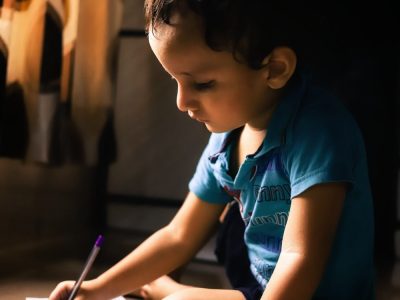
“The methodology of alternative schools often revolves around personalised and experiential learning. Unlike traditional education, alternative schools prioritise individual needs, diverse teaching methods, and real-world applications. For instance, project-based learning is a common approach. In a science class, instead of traditional lectures, students might engage in a hands-on project like building a small-scale ecosystem. This not only reinforces theoretical knowledge but also fosters critical thinking and problem-solving skills,” explain Varsha, 54, a professor at University of Delhi.
Additionally, collaborative learning is often integrated. In a language arts class, students might collectively work on creating a multimedia presentation about a novel, incorporating elements like video, music, and artwork to enhance their understanding and communication skills.
“Flexible schedules and self-directed learning are also key components. For example, in a history class, students may choose from a variety of topics for an in-depth research project, allowing them to explore areas that align with their interests and passions,” adds Dilip McCune, director at YMCA, Janpath.
In essence, alternative schools emphasise on personalised, experiential, and collaborative learning, providing concrete examples like project-based assignments, multimedia presentations, and self-directed research projects to enhance students’ overall educational experience.
Challenges for alternate schools
Societal perceptions and acceptance are the major challenges that alternate schools face.
Doctor TR John, psychologist, explains, “Alternative schools face resistance and scepticism from society. Many individuals, including parents and policymakers, are accustomed to traditional educational models, and alternative methods may be viewed with suspicion or seen as unconventional. There’s a prevailing belief in the effectiveness of traditional grading systems and standardised testing, making it difficult for alternative schools to gain widespread acceptance.”
The societal perception can affect enrolment rates and hinder the growth of alternative schools.
Doctor John observes, “Parents may be hesitant to choose alternative education for their children due to concerns about future opportunities, such as college admissions or job prospects. Overcoming this challenge requires effective communication and awareness campaigns to demonstrate the value and success of alternative approaches.”
Another critical challenge is obtaining recognition and accreditation from educational authorities.
Elaborating on this challenge, Shruti Naidu, wellness coach, asserts, “Traditional systems often have well-established standards and criteria for accreditation, which may not align with the unique methodologies of alternative schools. The lack of official recognition can lead to doubts about the quality and legitimacy of education provided by these institutions.”
Without proper recognition, alternative schools may face difficulties in attracting students and retaining talented educators.
Naidu adds, “Graduates may encounter challenges when seeking admission to mainstream higher education institutions or entering the job market. Addressing this challenge involves engaging with educational authorities, showcasing successful outcomes, and advocating for flexible accreditation standards that acknowledge diverse educational models. Successfully navigating these challenges requires a collaborative effort involving alternative schools, parents, policymakers, and educational authorities. Creating awareness about the benefits of alternative education, showcasing success stories, and working towards a more inclusive and flexible accreditation system can contribute to overcoming these societal hurdles.”

